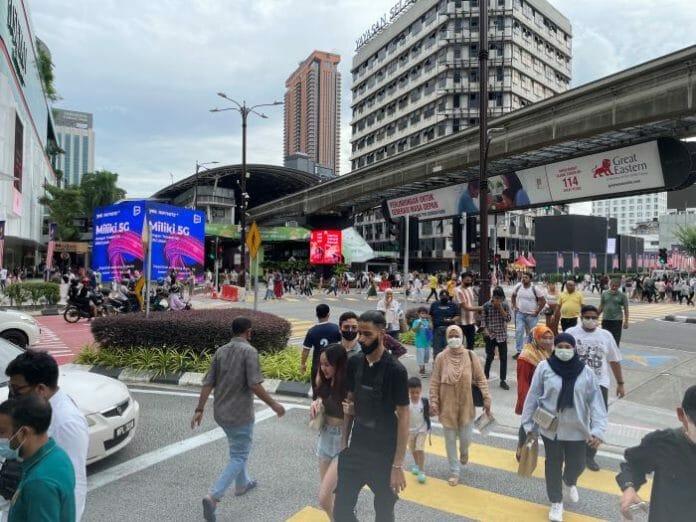Budget 2024 – under the theme “Madani Economy: Empowering the People” – is expected to focus on alleviating the cost-of-living pressures on middle income earners together with helping small and medium-sized enterprises (SMEs).
Whilst inflation is slowing down and it’s expected that Budget 2024 will focus on subsidy rationalisation and fiscal consolidation with the ultimate aim of deficit reduction, cash flow remains a critical and major issue for households and small and medium-sized enterprises (SMEs), including the micros.
Cash flow is simply the remaining amount of cash available minus payment commitments such as debt/loans and other regular liabilities (e.g., taxes, rental, assessment and quit rent, utilities).
For SMEs, payment commitments extend to (fixed) overhead costs (in addition to the liabilities enumerated above) which encompasses management salaries, marketing/promotional materials, insurance, employers’ Employee Provident Fund (EPF) and Employee Insurance Scheme (EIS) contributions, Socso (social security), etc. and even the increase(s) in the minimum wage that’re not necessarily related to e.g., volume of production and, by extension, profit levels of a business.
In addition, SMEs are affected by higher production costs due to the ringgit depreciation and supply chain reconfigurations, higher “margins of safety” (borrower’s and lender’s risks), including user-costs of capital, for example, higher turnaround time for application processing by banks due to credit, portfolio, balance sheet and project valuation assessments, and uncertain expectations about the current economic/business environment (which have resulted in vendors and suppliers cautious about extending credit lines, for example, up to a 30-day term).
This entails that irrespective of the profit margins, businesses that’re saddled with fixed payment commitments resulting in financial stress when revenue is shrinking/declining would either have to dip into their retained earnings, for example, past revenue, undeclared dividends) as internal sources or recourse to external sources in the form of additional debt (where development financial institutions/DFIs as government-linked companies/GLCs play a critical role in financing as the “lender-of-last resort” for the SMEs).
The same is true for households where sustained cost-of-living pressures which affect the lower and middle-income groups the most as measured by the food and beverage groups and sub-groups as per Engel’s Law (the inverse of which is that consumption expenses rise with decreased/reduced income or otherwise loss of purchasing power).
According to the August 2023 Consumer Price Index (CPI) statistics by the Department of Statistic (DOSM), the food and non-alcoholic beverages group was at 5.1%, followed by the restaurants (and hotels) group at 4.7%. The “food at home” sub-category was at 2.9% with the food away from home sub-category at 5.9% (“staggering”, especially given that many households rely on outside food due to work commitments).
Rice, bread, and other cereals were at 4%, meat overall was at 5.8%, and milk, cheese, and eggs were at 4%. The only reprieve would be the fall or deflationary (not merely disinflationary) effect in relation to vegetables at -1.1 (as compared to the same month last year).
The “consecutive” (with pauses in between) Overnight Policy Rate (OPR) hikes by Bank Negara amounting to five rounds have squeezed the finances of households and SMEs, in addition to the on-going scarring impact of the Covid-19 lockdowns.
The intention is to dampen demand but inflation (coupled with economic shutdowns resulting in income loss, etc.) has been supply-driven (e.g., port closures affecting shipping costs) as well geopolitical conflicts (in Russia-Ukraine affecting energy prices). This meant there’s no excess savings or reserves that would translate into excess spending power to begin with – “pent-up demand” (so-called) notwithstanding.
The purpose of dampening demand has come at the price of loss of purchasing power, instead, and which co-exists with “sticky” or persistently inflationary prices of essentials (for example, mainly in reference to food).
This means that any dampening of demand will not necessarily be in tandem with dampening of prices – resulting in a stagflation.
Moving on to our SMEs: To repeat a domestic policy “truism” but contextualized for the year 2022, they account for 97.4% of all businesses in the country and employ up to 7.59 million people which is 48.2% (i.e., virtually half) of Malaysia’s total workforce.
The figure would be higher if the informal sector (e.g., self-employed, independent contractors, gig workers) is taken into account. SMEs generate 38.4% of country’s gross domestic product (GDP).
Persistent cash flow problems would lead to a slowdown in production and other forms of business activities at a macro-level as costs exceed revenue – since SMEs and, by extension, the economy are a complex of inter-connected balance sheets (one’s asset is someone else’s liability).
This could be accompanied by layoffs (to cut labour costs). For non-manufacturing SMEs like shop-lot operators, cash flow problems would result in closures as the remaining assets are sold off to fulfil residual payment commitments (even as bankruptcy is postponed/deferred or even exempted altogether – thanks to the new threshold limit of RM100,000, etc. under the Insolvency Act 2023).
As it is, SMEs are operating on a thin profit margin or even making breakeven. The situation has been exacerbated by the TNB rate hike which started last year (thus increasing electricity costs).
The Small and Medium Enterprises Association of Malaysia (SAMENTA) has provided an example where a hike up of 18.4% in electricity bill for a business that’s running at sub-10% margin (for example, part of the wider/overall markup – margin of safety) could mean a reduction of profits up to 40% which could make or break a business (“SME association questions need for power rate hike when TNB made profits last year”, Malay Mail, January 30, 2022).
Thankfully, the Madani unity government has provided a RM5.2 billion electricity subsidy which will particularly help our SMEs tide through/over the rising costs. It’s hoped that Budget 2024 will contain additional provisions for next year.
Whilst the withdrawal of subsidies for the multinational companies (MNCs), mid-tier companies (MTCs) and other corporations will also impact on their profit margins and earnings, they don’t suffer from cash flow issues – as derived from the trio of income (revenue), balance sheet such as rental yields and portfolio (capital assets – physical and financial) sources.
They are also in a position to spearhead the transition to green and renewable energy under the framework of the recently announced and much-lauded National Energy Transition Roadmap (NETR). Deployment of solar panels should be given especial attention since it’s cheaper and more cost-effective, comparatively (“Why Malaysia should go for solar energy”, Koon Yew Yin, Free Malaysia Today, October 8, 2023).
Towards that end, with the NTER in mind, it’s hoped that Budget 2024 would contain tax incentives such as allowances to both corporations and SMEs – which are counterbalanced by the introduction of a multi-tiered corporate tax (just like income tax) – to expedite the transition away from full or heavy reliance on conventionally-generated electricity, albeit increasing usage of gas turbines by TNB, notwithstanding.
This means that TNB needs to dip into the mix of debt-equity sources (with a heavy bias on the former since such capital investment are long-term projects, particularly more so when it comes to industrial plants, etc.), including retained earnings which will be significantly eroded post–earnings before interest, taxes, depreciation and amortisation (EBITDA).
The post-EBITDA includes tax and also the costs of the Imbalanced Cost Pass-Through (ICPT) mechanism under the Incentive Based Regulation (IBR) framework.
The repowering of the Sultan Ismail Power Station using combined cycle gas turbine (CCGT) with hydrogen-ready technology alone would cost RM6.3 billion which is in excess of TNB’s 2022 net profit of RM3.46 billion. Borrowings will either have to come from a consortium of banks or debt issuance, i.e., corporate bonds (“Tenaga needs to borrow more amid tighter cash flow”, The Edge Markets, July 12, 2022).
Now, the imposition of capital gains tax (CGT) on listed shares (Bursa Malaysia) under Budget 2024 would “incentivise” the deployment of part of the retained earnings towards productive use, among others, and (re)align and link the market valuation/price of financial assets with that of the physical assets (in relation to the liquidity preference).
These go a long way in encouraging the further accumulation of the net capital stock (NKS) as measured by the gross fixed capital formation (GFCF) – typically on a maximum of a 9-year repayment term for machinery/equipment – which remains below pre-Covid-19 levels (“Fixed-asset investments fall short”, The Star, July 26, 2023).
This would also apply to TNB in the areas of smaller scale projects such as leveraging on existing oil and gas (O&G) infrastructures to be repurposed – primarily to support the development of the renewable energy sector by transporting (green) hydrogen produced at sea back to shore (“Spearheading renewable energy development in Malaysia”, Jennifer Ley, EMIR Research, March 3, 2023).
In EMIR Research article, “A simulated or guided peg – neither soft nor hard” (August 8, 2023), it’s proposed that there should be a strategy to buffer corporate debt (denominated in the USD). Such corporate debt is a strategic necessity as a hedge against currency fluctuations – hedging the hedge.
This would envisage Bank Negara’s dynamic forex hedging programmes being opened up to corporate entities (i.e., non-institutional residents). It’s hoped that Budget 2024 would come up with the fiscal/tax incentives/allowances. Again, this would help our SMEs as they seek to increase their international market exposure.
In addition, the government should popularise the use of invoice factoring amongst SMEs as one market-based mechanism to mitigate against cash flow problems. Budget 2024 should provide that the use of these “discounted” notes could be off-set or deducted from the tax liability – as a form of additional/complementary tax “cut” for SMEs.
The State still and can play a vital role in managing market dynamics and the latest rice hoarding incident involving certain mid-stream players (non-BERNAS) provides such an opportunity for further intervention in the form of profit (re)allocation based on the (re)configuration of the volume handled.
The government is already the price-setter which sets the floor price for mid-stream purchase of domestic upstream supply (including when it comes to being the buyer-of-last resort which is especially applicable to BERNAS) alongside the ceiling price at the downstream level.
What the government can do is to compel all the non-BERNAS cartel players to form a joint-venture (JV) or a consortium for the purpose of ensuring that the smaller players (as profit-takers as opposed to being profit-makers) will get their “fair share”.
A JV will ensure that profits are (re)allocated according to the volume of rice sacks handled and based on the logistical routes determined as well as equity share of the participants.
On the Public Finance and Fiscal Responsibility Act that was passed on October 11, it’s judicious of the government not to include a provision on debt rollover as one of the pillars of the fiscal objectives – constituting an implicit recognition that the government budget isn’t like a household’s.
Focus should be on decreasing the debt service charges (DSC) which requires coordination with Bank Negara – implementing a form of quantitative easing (QE) to lower the long-end of the term maturity structure like long-term bonds to reduce the yields.
Given that the World Bank has cut Malaysia’s GDP forecast to 3.9% which is dire given that the stock-flow consistent (SFC) model of our national accounts relies on an export sector surplus (that has been on a decline for the past eight months followed by the drop in imports on intermediate goods and capital inputs), Budget 2024 should be flexible enough to increase deficit spending (government sector) to mitigate cash flow problems in the economy.
Jason Loh Seong Wei is Head of Social, Law & Human Rights at EMIR Research, an independent think tank focused on strategic policy recommendations based on rigorous research









